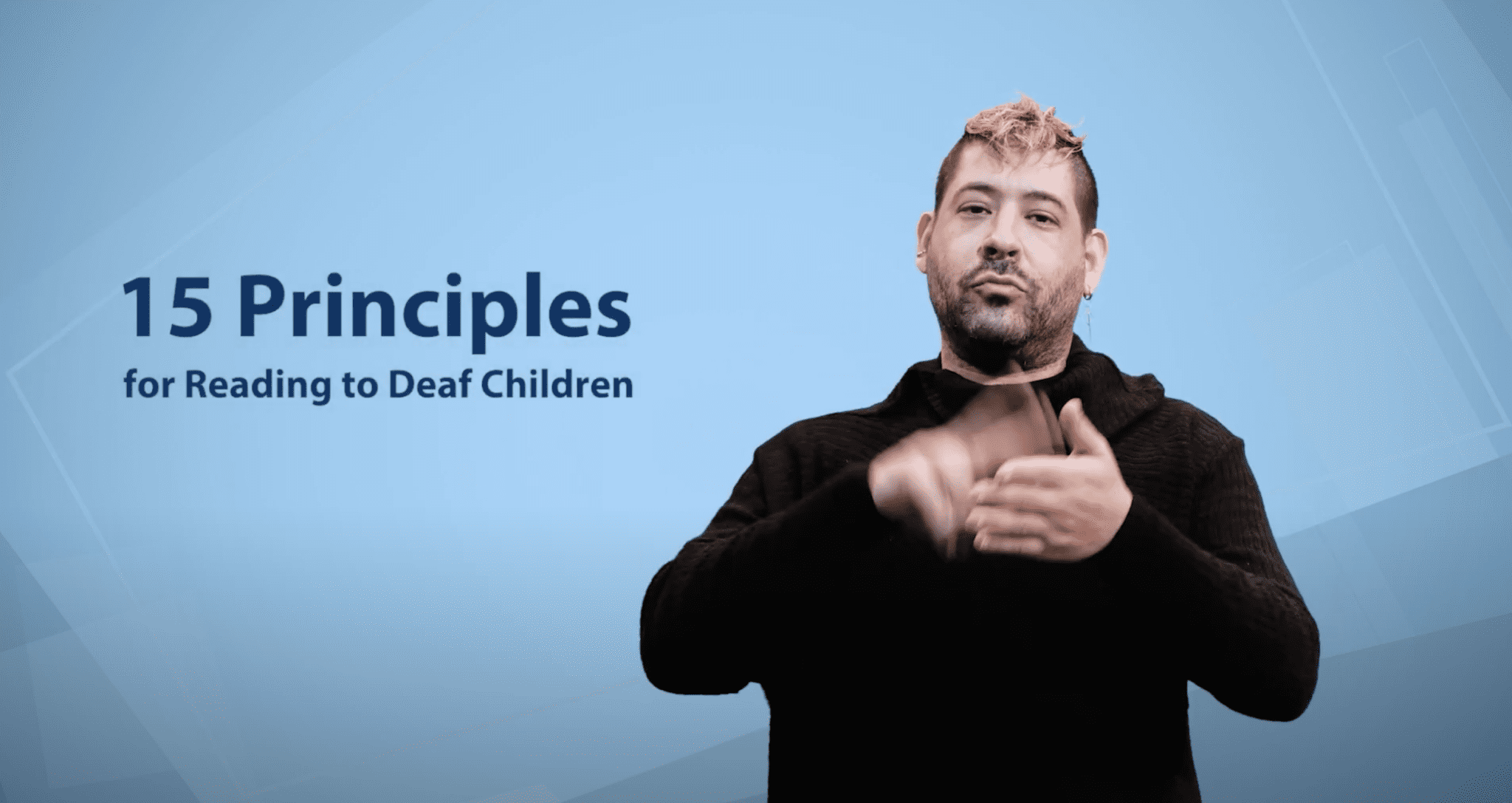15 Principles for Reading to Deaf Children
- Resources and Trainings
- 15 Principles for Reading to Deaf Children
The following 15 principles are best practices for how to read aloud to deaf and hard of hearing children. They are based on research on how Deaf parents read to their Deaf children. These principles were developed to give parents and teachers of deaf children skills and strategies for reading aloud in American Sign Language.

For more in-depth coverage of these principles, please click on the box. They were based on, Reading to Deaf Children: Learning from Deaf Adults by David R. Schleper.
1
2
Keep both languages (ASL and English) visible.
Ensure the child sees both the signing and the words/pictures.
3
4
Reread stories on a “story telling” to “story reading” continuum.
The first few times, ensure the child understands the story. Then, slowly, focus more and more on the text.
5
Follow the child’s lead.
What does the child want to read? What if the child wants to read just one part of a book, then move to another? Follow the child.
6
7
Adjust sign placement to fit the story.
Sometimes sign on the page, sometimes sign on the child, and sometimes sign in the usual place.
8
Adjust the signing style to fit the story.
Be dramatic. Play with the signs and exaggerate your facial expressions to show different characters.
9
10
Use attention maintenance strategies.
Tap lightly on the child’s shoulder or give a gentle nudge to keep the child’s attention.
11
12
Engage in role play to extend concepts.
Act out the story after you have read it.
13
14
15
You will be able to view each principle in a video individually along with a detailed explanation about each principle.
If you want to learn more about the 15 Principles for Reading to Deaf Children, we have a self-paced, online training for which you can register.
This is an in person training. The training can be adapted to an overview (an hour and half), three or six hours based on the needs of the audience.
